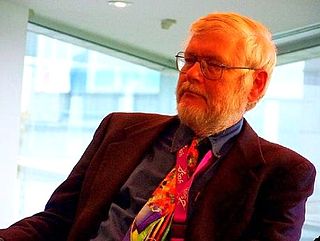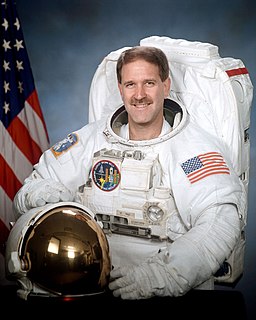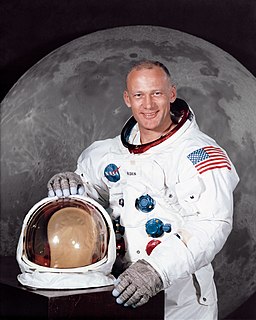A Quote by Seth Shostak
The Moon is a ball of left-over debris from a cosmic collision that took place more than four billion years ago. A Mars-sized asteroid - one of the countless planetesimals that were frantically churning our solar system into existence - hit the infant Earth, bequeathing it a very large natural satellite.
Related Quotes
The chunks of comet Shoemaker-Levy 9 were so large, and were moving so fast, that each hit Jupiter with at least the equivalent energy of the dinosaur-killing collision between Earth and an asteroid 65 million years ago. Whatever damage Jupiter sustained, one thing is for sure: it's got no dinosaurs left.
All indications are that three and a half billion years ago, Mars looked like Earth. It had lakes. It had rivers. It had river deltas. It had snow-capped peaks and puffy clouds and blue sky. Three and a half billion years ago, it was a happening place. The same time on Earth, that's when life started. So did life start on Mars?
This is a living planet. Look around. Mars, Venus, Jupiter. Look beyond our solar system. Where else is there a place that works, that is just right for the likes of us? It has not happened just instantly. It is vulnerable to our actions. But it's the result of four and a half billion years of evolution, of change over time. And it changes every day, all the time. It would be in our interest to try to maintain a certain level of stability that has enabled us to prosper, to not wreck the very systems that give us life.
If you were to stand on an asteroid in the main belt of asteroids between Mars and Jupiter in our solar system, you might be able to see one or two asteroids in the sky, but they would be very far away and very, very small. So you wouldn't have this 'dodging through tons of rocks' business you get in the movies.
I tell my students, with a feeling of pride that I hope they will share, that the carbon, nitrogen, and oxygen that make up ninety-nine per cent of our living substance were cooked in the deep interiors of earlier generations of dying stars. Gathered up from the ends of the universe, over billions of years, eventually they came to form, in part, the substance of our sun, its planets, and ourselves. Three billion years ago, life arose upon the earth. It is the only life in the solar system.
The future is about wings and wheels and new forms of space transportation, along with our deep-space ambition to set foot on another world in our solar system: Mars. I firmly believe we will establish permanence on that planet. And in reaching for that goal, we can cultivate commercial development of the moon, the asteroid belt, the Red Planet itself and beyond.































